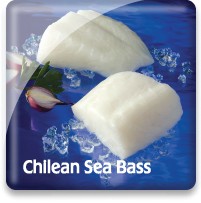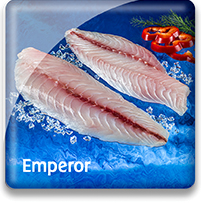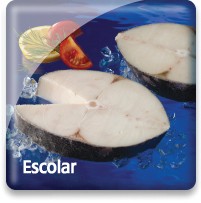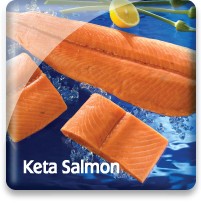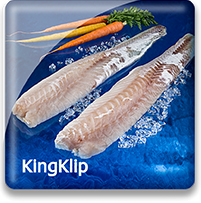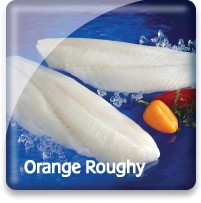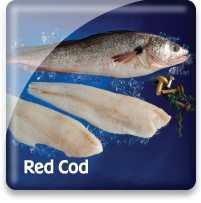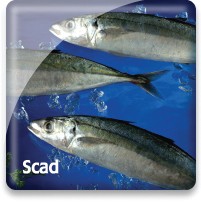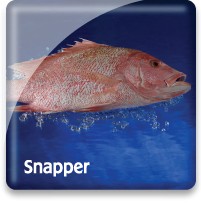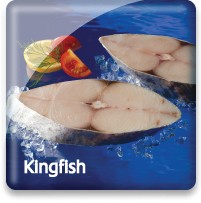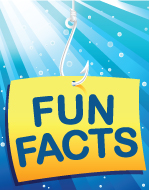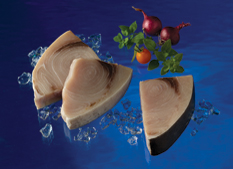
Swordfish

Market Name: Eating QualitiesThe gray-white flesh of the swordfish is firm in texture and moderate in fat content. Cooked, the dense meat exudes a sweet flavor that is unmatched by any other seafood. The versatile fish is typically steaked and excellent grilled, broiled, baked or poached.
Swordfish use their bills to slash at larger prey (like a sword) to make it easier to eat. They do not have teeth. Their bills are stronger and longer than all other bill species.
|
Description & CharacteristicsSweet in flavor and meaty in texture. It is excellent on the grill and fairs equally well pan seared or broiled. Because our Swordfish is carefully selected and graded by our trusted suppliers, it is an item you may proudly offer your customers. Swordfish, Xiphias gladius, is a highly migratory, large fish that is found throughout the world’s tropic and temperate seas. It generally migrates between colder waters in the summer to warmer waters in the winter for spawning. The sleek, streamlined fish has a distinctive sword on its head. Its body is dark gray on top and pale white-gray on the belly. Commercially, fish are usually caught between 50 and 400 pounds, but this enormous fish can weigh as much as one ton. Most domestically caught fish are sold fresh, but quantities are also frozen. Further supplies of frozen swordfish are imported from many countries throughout the world. Swordfish is caught commercially by longline, harpoon, gillnet, and trawl. Fish landed by harpoon bring a higher price since longline fish are often dead when brought on board the fishing vessel. The fish is headed and gutted as soon as it is caught. The belly cavities are stuffed full of ice and the fish are buried completely in ice. Sashimi grade swordfish requires careful handling to ensure the best quality. It is line caught, processed and frozen aboard the fishing vessel.When buying swordfish, look for parasites, signs of dehydration, and for any sign that it was frozen too slow. Sometimes swordfish have very large parasitic worms that, although harmless, do not look appealing. Segments of these noticed in steaks should be removed before the fish is cooked. Some buyers will reject fish with noticeable parasites. Very occasionally, a swordfish with soft, jelly-like flesh is found. This condition cannot be seen until the fish is cut. It is a natural condition of the fish, caused by a microscopic parasite, which unfortunately makes the fish quite useless for consumption. More seriously, swordfish can accumulate mercury from their food. Partly because the fish live a very long time, the mercury content in the flesh increases. Since the larger fish are older and have had longer to accumulate mercury, smaller fish are preferred. The FDA advises pregnant women, and women of childbearing age who may become pregnant, to limit their consumption of shark and swordfish to no more than once a month. For other persons, regular consumption of fish species with methyl-mercury levels around one part per million (ppm)—such as shark and swordfish—should be limited to about seven ounces per week (approximately one serving) to stay below the acceptable daily intake for methyl-mercury.Swordfish is typically merchandised in the form of steaks, which are cut from the sides or slabs. Frozen swordfish is sold headless and dressed as slabs or sides (fillets with the belly bone intact), as wheels (vertical slices across the backbone through the whole fish) or as steaks. Swordfish is a great example of effective management. The once severely over-fished northern Atlantic stock is nearly fully rebuilt. At the urging of the U.S., the International Commission for the Conservation of Atlantic Tunas (ICCAT) recognized the decline of the North Atlantic swordfish. Concerned with the long-term sustainability of swordfish stocks, internationally set swordfish quotas and minimum size requirements were enacted. In order to implement recommendations of ICCAT, NOAA Fisheries has banned the import of undersized Atlantic swordfish, extended dealer permitting and reporting requirements to swordfish importers, and implemented a swordfish import tracking program.
Other Resources |
Handling Instructions for Swordfish
Frozen swordfish loins and portions should be stored at or below 0°F (-18°C) and then thawed properly when ready to cook. Our swordfish has a frozen shelf life of 18 months. Links to proper seafood handling instructions: NOAA - Fish Watch: Handling Seafood and A Consumer Guide to Safe Seafood Handling.
Thawing Swordfish
Thawing is accomplished by removing the swordfish loins and portions from their original packaging and placing them in a sealed plastic container or bag and placing in the refrigerator (33 to 39°F) for 12-24 hours or longer for the larger sized loins. This is our recommended thawing method for swordfish. Swordfish that is not consumed promptly after thawing needs to be refrigerated between 33 and 39°F and totally consumed in 2-3 days.
Important Instructions for Swordfish
Consuming swordfish immediately after proper thawing yields the best quality.
The Federal Food, Drug and Cosmetic Act now requires that all foods that are not raw agricultural commodities and that contain a major food allergen be labeled to clearly identify the name of the food source form which the allergen is derived. (21 CFR U.S.C. 343(w)(1)). The act defines eight foods, and any ingredients derived from these foods as major food allergens: Fish, Crustacean Shellfish, Milk, Eggs, Tree Nuts, Peanuts, Wheat & Soybeans. The name of the food source that must be listed on the label for fish or crustacean shellfish must be the specific type of fish or crustacean shellfish. The market names of species of fish and crustacean shellfish should be used to identify the food source of these two major food allergens. If you intend to re-pack these seafood products, be sure the allergen is declared in either one of two ways:
1) Within the list of ingredients
or
2) In a separate “Contains” statement immediately after or adjacent to the list of ingredients.
Consult the Fish and Fishery Products Hazards and Controls Guidance, Fourth Edition, Chapter 19 for more detailed information on the labeling of food allergens.
Cooking Tips
Swordfish can be prepared using a wide variety of cooking techniques. Links to swordfish cooking tips and recipes.
Chile
A long, skinny country (2,700 miles long and 110 miles wide), Chile is a land of contrasts. From the Pacific Coast to the high, rugged Andes range that runs the length of the country, Chile has five unique climate zones and growing conditions that favor a wide range of agricultural and fisheries products.
In addition to being the world’s largest exporter of fresh grapes, plums, and fresh fish, Chile is the world’s second-largest producer of farmed salmon.
Wild capture fishery: In addition to such well-known products as Chilean sea bass (Patagonian toothfish), Chilean waters are rich with Merluza (also known as Hake); Congrio; Corvina; swordfish; mussels, scallops, king and snow crab, and surf clams. In addition, Chile is one of the world’s major producers of fishmeal.
Aquaculture: Over the past 20 years, Chile has emerged as an aquaculture powerhouse, becoming the world’s second-largest producer of salmon (Norway is the largest). Salmon species grown in Chile include Atlantic, coho (silver), and some king salmon, as well as steelhead trout). Because of the cool ocean current known as the Humboldt Current, Chile produces salmon in the extreme Southern regions of the Country—equivalent to Madrid and Rome in latitude! These regions are known as the Zona de Los Lagos (Lakes) and Extremo Sur (Extreme South), corresponding with Regions X and XI, and even reaching into Region XI.
http://cport.net/go-blue-seafood-sustainability-spectrum
Go Blue! Seafood Sustainability Spectrum*Click here for an explanation of our Sustainability Spectrum 
Sustainability AssessmentSwordfish, sometimes referred to as broadbill, are a highly migratory species common in tropical, temperate, and are even found in colder oceans worldwide. Once they reach 2 to 3 years of age, Swordfish have very few natural predators. Swordfish have a life span of about 7-9 years and grow relatively quickly. The world-wide popularity of their meat and the sheer number of international longline fleets targeting tuna and Swordfish in all oceans make Swordfish moderately vulnerable to fishing pressure. Though more data are needed to properly define the number of individual Swordfish stocks (genetically distinct populations), most populations are thought to be at healthy levels.
Swordfish are generally caught in targeted longline fisheries, or are caught as bycatch in tuna longline fisheries. Longlines, the gear responsible for the majority of Swordfish catch, have minimal habitat impacts because they do not come in contact with the seafloor. However, high rates of bycatch of threatened and endangered sea turtles, seabirds, and sharks are problematic, particularly among international fleets, where observer coverage is low and bycatch mitigation measures have not been universally adopted. Sea Port currently imports Swordfish from Chile and Singapore. All of Sea Port’s Swordfish is documented to be traceable back to a legal fishing vessel by way of the HMS (highly migratory species) International Trade Permit system. International efforts to improve the responsible management of the world's swordfish stocks are growing and being lead by the United Nations, the Indian Ocean Tuna Commission (deals with swordfish also), the Western & Central Pacific Fisheries Commission, the International Commission for the Conservation of Atlantic Tunas, and various NGOs. 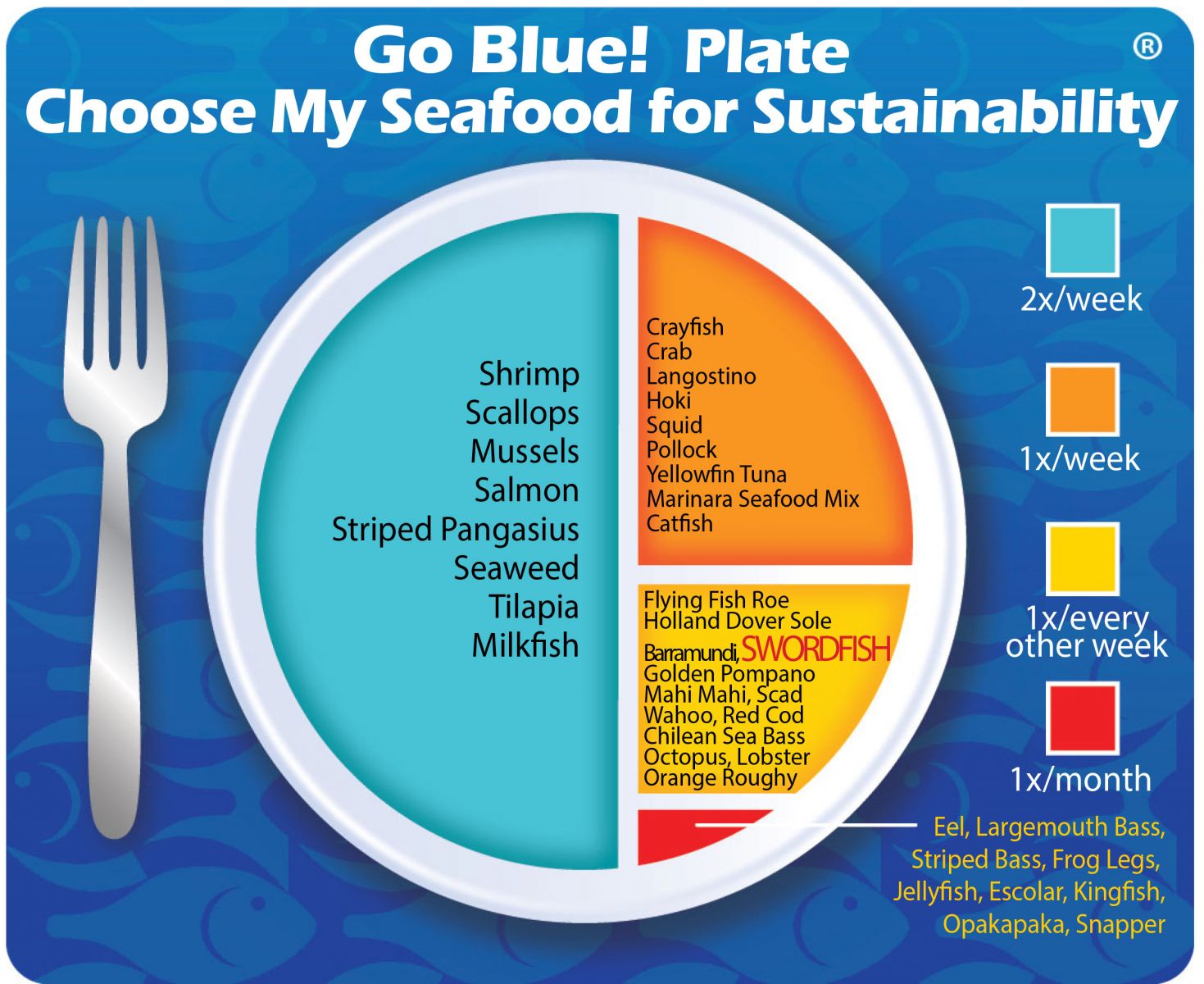
Environmental Impact: Moderate to HighThough Swordfish grow relatively quickly and produce millions of eggs annually, their popularity and the large number of fleets targeting them worldwide make them moderately vulnerable to fishing pressure.
Sustainability Improvements NeededImproved information on genetic stock structure will improve the accuracy of stock assessments. Improvement is needed in bycatch mitigation techniques for international fleets.
Actions that Sea Port is UndertakingSea Port continues to purchases only Swordfish that are documented to be traceable back to a legal fishing vessel by way of the HMS (highly migratory species) International Trade Permit system and by doing so, this helps further improvements in the stock data collection process. Sea Port believes that, in aggregate, choosing from a diverse variety of seafood is better for sustaining the world’s seafood resources and Swordfish should be a part of this variety. We created the sustainability assessments for each of our seafood items in order to reveal the existing and potential environmental impacts and risks that are associated with producing them for human consumption. This allowed us to establish the starting position for each of our seafood items along our progressive Go Blue! Seafood Sustainability Spectrum®. These assessments are only a single snapshot in time and because of this, we will continue to assess and update the critical sustainability needs associated with our supply sources and issue updates to the Go Blue! Seafood Sustainability Spectrum® as needed. There is a growing global awareness for the need to assure the sustainability of farmed and wild caught seafood and because of this; all around the world positive changes are rapidly occurring at all levels of the seafood supply chain. We will continue to spread this growing awareness and work with our many industry partners to improve the sustainability of all seafood, which we believe is the ideal protein of choice to feed an ever growing world population. Our Go Blue! Seafood Sustainability Spectrum® serves as our compass and yardstick as we strive to move all our products forward to becoming more sustainable. Please join us in this committed quest and Catch Our Wave® to sustainability by choosing a diverse variety of responsibly produced seafood as part of your diet.
|


